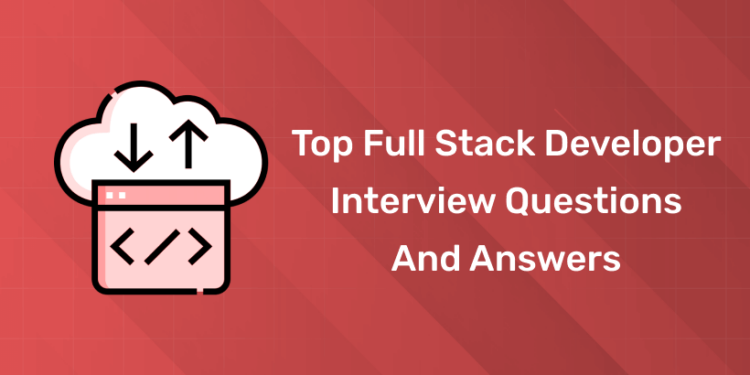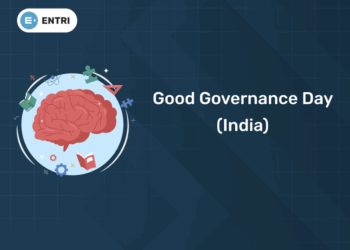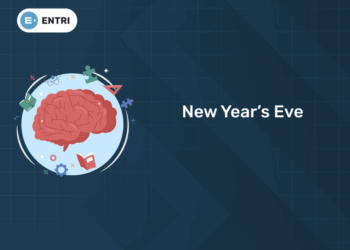Table of Contents
Full Stack Developer Interview Questions for Freshers
1. To develop a project from scratch, what technologies and languages would you need or what skills a full stack developer should have?
- Programming Languages: Full-stack developers should be competent in more than one programming language, such as Java, Python, PHP, Ruby, C++, etc.
- Front End technologies: You should be familiar with front-end technologies such as HTML5, CSS3, JavaScript, etc. Knowledge of third-party libraries such as jQuery, Ajax, Angular, ReactJS, etc., is also important.
- Frameworks: This requires proficiency in a variety of development frameworks, including Spring, Spring Boot, Django, MyBatis, PHP, Hibernate, and others.
- Databases and caches: As a full stack developer, you should also know about various DBMS (Database Management Systems) technologies like MySQL, SQLite, Oracle, and MongoDB. It is helpful to have a basic understanding of caching mechanisms like redis, memcached, varnish.
- Design Ability: Having a good understanding of design is also important if you wish to become a successful Full-Stack web developer. Moreover, the person should be aware of the principles of prototyping and UX/UI design.
- Server: Experience with Apache or NGINX would be beneficial. Good knowledge of Linux helps enormously when administering servers.
Click here to know the fundamentals of Full Stack Development!
2. Which language is the most preferred by full-stack developers?
3. Explain Pair Programming.
4. What do you mean by CORS (Cross-Origin Resource Sharing)?
5. What is Callback Hell?
6. Explain Long Polling.
learn full stack development online ! enroll now !!
7. Can you tell me what are the latest trends in Full Stack Development? Also, how do you keep yourself updated about the new trends in the industry?
- The rise in frameworks and libraries like ReacJs and VueJs, progressive apps, real-time web apps, and mobile web development.
- Enhancements to JavaScript are beneficial to programming
- The emergence of a more compatible extension.
The interviewer may ask you how you keep updated with new trends in the industry. You can explain how you gain your knowledge and understanding by learning from friends, colleagues, or online. That’s an appropriate way of answering the question. This is a good time to show off any personal projects you have undertaken that apply your skills. Also, you might mention the webinars or forums that you attend regularly.
8. State difference between GraphQL and REST (Representational State Transfer).
| GraphQL | REST |
|---|---|
| It is a Query Language for APIs that enables declarative data fetching to provide clients control over which data to retrieve from the API. | It is an API design architectural style that defines a set of constraints to create web services. |
| GraphQL is known for its high predictability. With this, you can send requests to your API and get the exact results you are looking for without having to include anything you don’t need. GraphQL queries give predictable results, which improves their usability significantly. | On the other hand, REST’s behaviour depends on the HTTP and URI methods used. API consumers can therefore be unsure of what to expect when calling an endpoint. |
| API security can be ensured by GraphQL, though the security features aren’t as mature as those of REST. GraphQL, for instance, assists in integrating data validation, but users are left to figure out how to apply authentication and authorization measures. | API security can be enforced in several ways using REST. You can implement multiple methods of API authentication, such as HTTP authentication, to ensure REST API security. |
| With GraphQL, you can retrieve everything you need through a single API request. You can specify the structure of the information you need, and the server will return the same structure to you, so there is no need to over-and under-fetch. | Consequently, since REST APIs have rigid data structures that return the specified data whenever they are accessed, you may end up with unwanted data or have to make multiple requests before getting the right data. As a result, the server’s response time (to return information) can be prolonged due to these shortcomings. |
| It only supports JSON format. | XML, YAML, JSON, HTML, and other formats are supported, as well. |
| The main use cases of GraphQL are mobile applications and multiple microservices. | Rest is mainly used for simple applications and resource-driven applications. |
9. What is CI (Continuous Integration)?
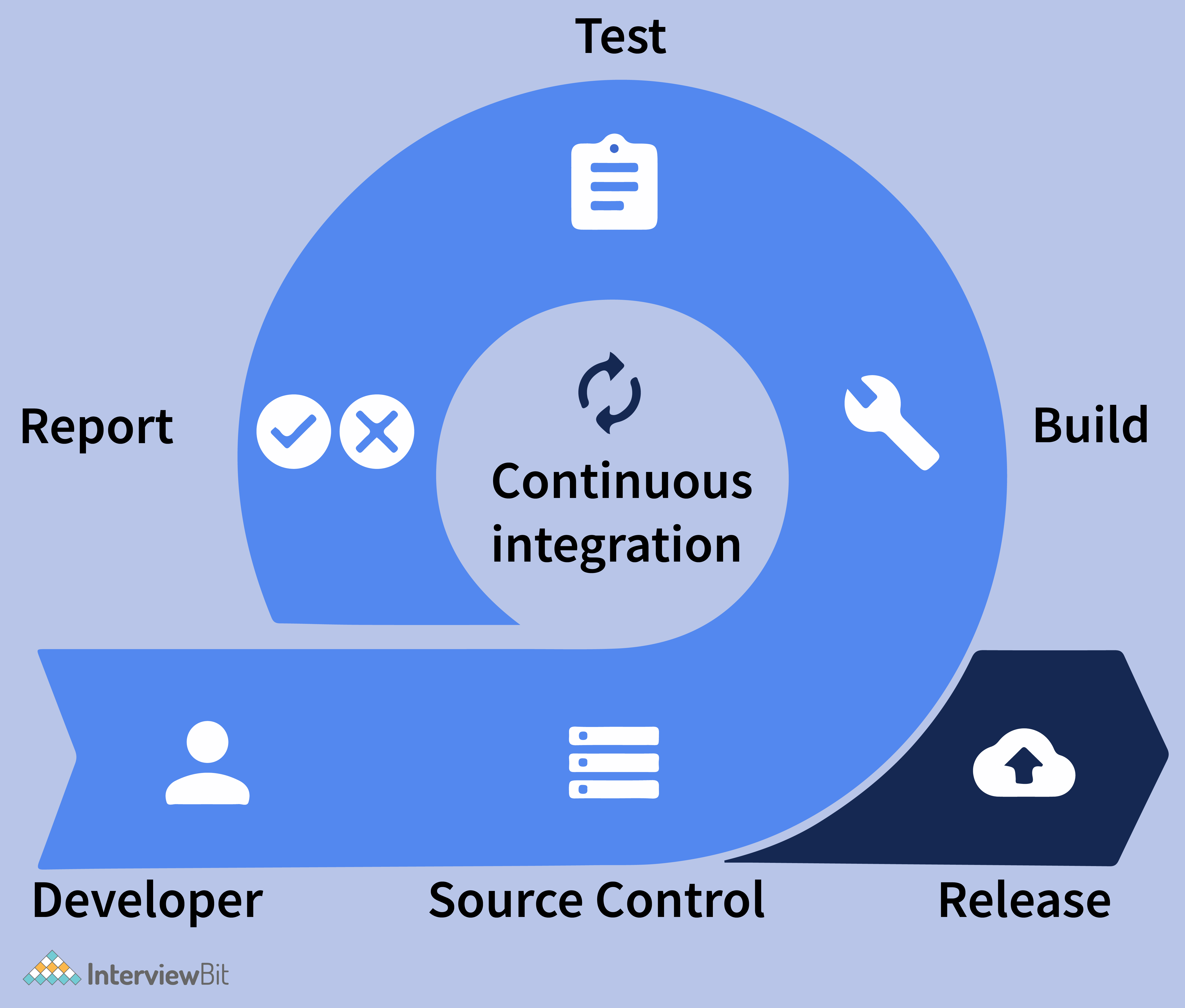
Advantages:
- Integrating regularly has the main benefit of detecting errors quickly and more easily. Since most changes introduced are small, pinpointing the specific change that caused a defect is easy.
- As a result of the smaller code changes and easier fault isolations, CI reduces MTTR (Mean Time to Resolution).
10. Explain the meaning of multithreading.
11. Explain the benefits and drawbacks of using “use strict”.
12. What are some of the uses of Docker?
- The code has to pass through many different environments as it travels from the developer’s machine to production. Consequently, each of these environments may be slightly different. Using Docker streamlines code development and deployment, as it provides a consistent environment from development to production.
- Docker’s primary purpose is to simplify configuration. With VM (Virtual Machine), you can run any platform with its configuration on top of your infrastructure. Docker offers the same functionality without the overhead of virtual machines.
13. Explain event loop in Node.js.
14. Is there a way to decrease the load time of a web application?
- Image Optimization: The file size of an image can be dramatically reduced by switching to a different file format. For example, GIFs work well for images with few colors, such as logos, JPEG is ideal for images with lots of colors and details, such as photographs, and PNG format is ideal for transparent images with high quality.
- Keep JavaScript and CSS in external files: Embedding JavaScript and CSS in HTML documents forces them to be downloaded every time the HTML document is loaded. In this case, browser caching is not utilized, and the HTML document becomes larger. This is why you should always place CSS and JavaScript in external files; it is a best practice and simplifies maintenance.
- Reducing redirects: Too many redirects will delay the loading time of a website. HTTP requests and responses are delayed each time a page redirects. Getting rid of unnecessary redirects on your site will reduce the load time of your site significantly.
- Load CSS and JavaScript files asynchronously: Your website contains CSS and JavaScript files that can be loaded either synchronously or asynchronously. As part of synchronous loading, each file is loaded sequentially, in the order it appears on your site. As opposed to synchronous loading, asynchronous loading allows multiple files to be loaded simultaneously, boosting the performance of a website.
- Minify HTML, CSS, and JavaScript: If you optimize the way your files load, your pages will load more quickly. You can do the same when it comes to HTML, CSS, and JavaScript code. By eliminating unnecessary spaces, characters, and comments, you can reduce the size of your files. This will make your web pages load faster.
| Are you aspiring for a booming career in IT? If YES, then dive in | ||
| Full Stack Developer Course | Python Programming Course | Data Science and Machine Learning Course |
15. Explain dependency injection.

- Client Class: A client class (dependent class) is one that depends on the service class.
- Service Class: Service (dependency) classes provide services to client classes.
- Injector Class: This class injects the objects from the service class into the client class.
16. What do you mean by observer pattern?
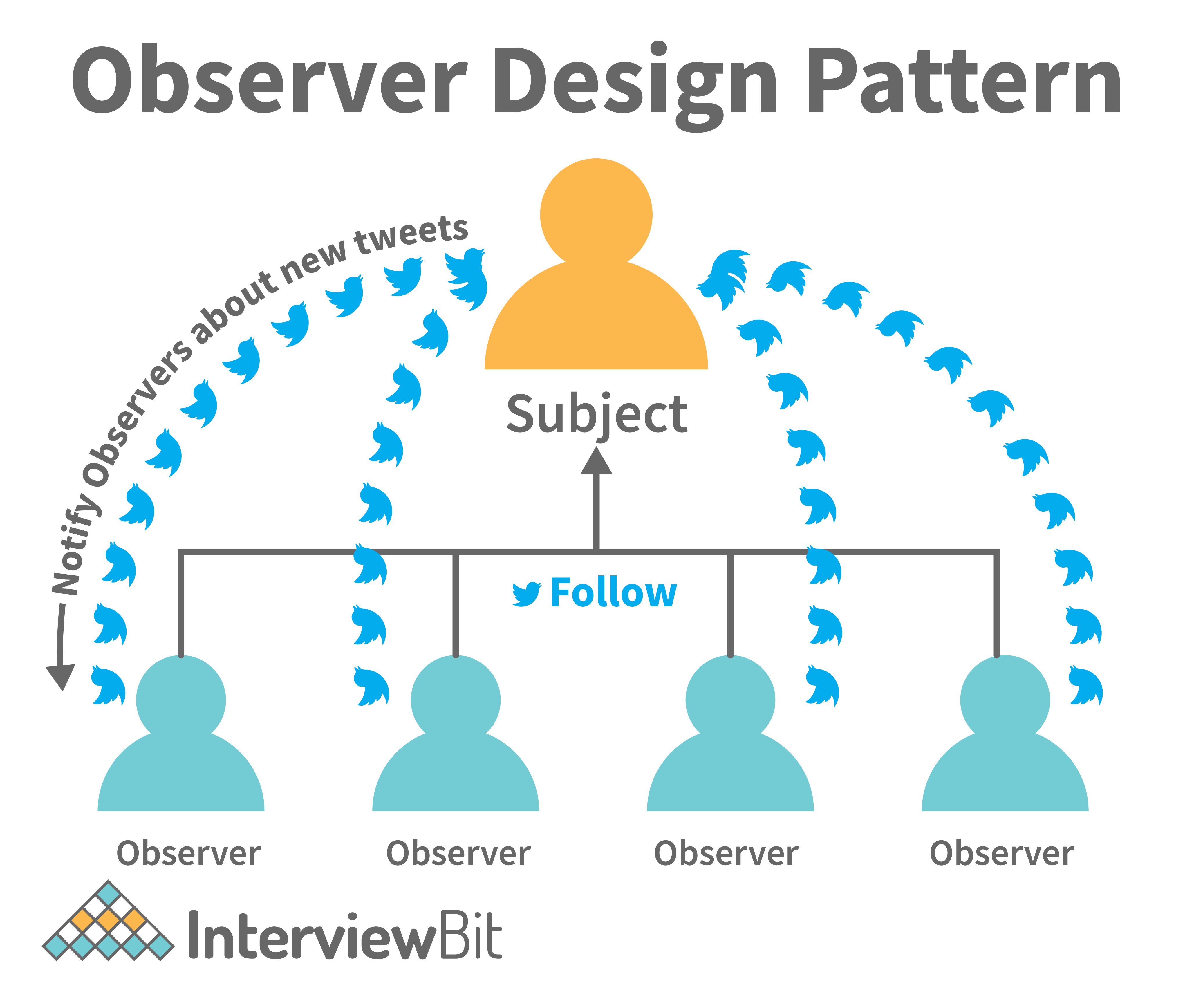
Full Stack Developer Interview Questions for Experienced
1: Which of the following is a JavaScript framework/library?
17. State difference between blue/green deployment and rolling deployment.
- Blue-Green Deployment Strategy:
A deployment strategy like this creates two separate infrastructure environments i.e., blue and green. A blue environment contains older code (old version), while a green environment (production) contains the latest code (new version). There is only one live production environment at any given time.
Example: For instance, the green environment is live and is receiving all user traffic, while the clone (blue) is idle. Once a new version of an application is ready for release, it can be deployed to the blue environment for testing. As soon as the new release passes testing, application traffic is switched from green to blue. Blue then becomes the live production environment, and Green becomes idle, ready for testing the next release.
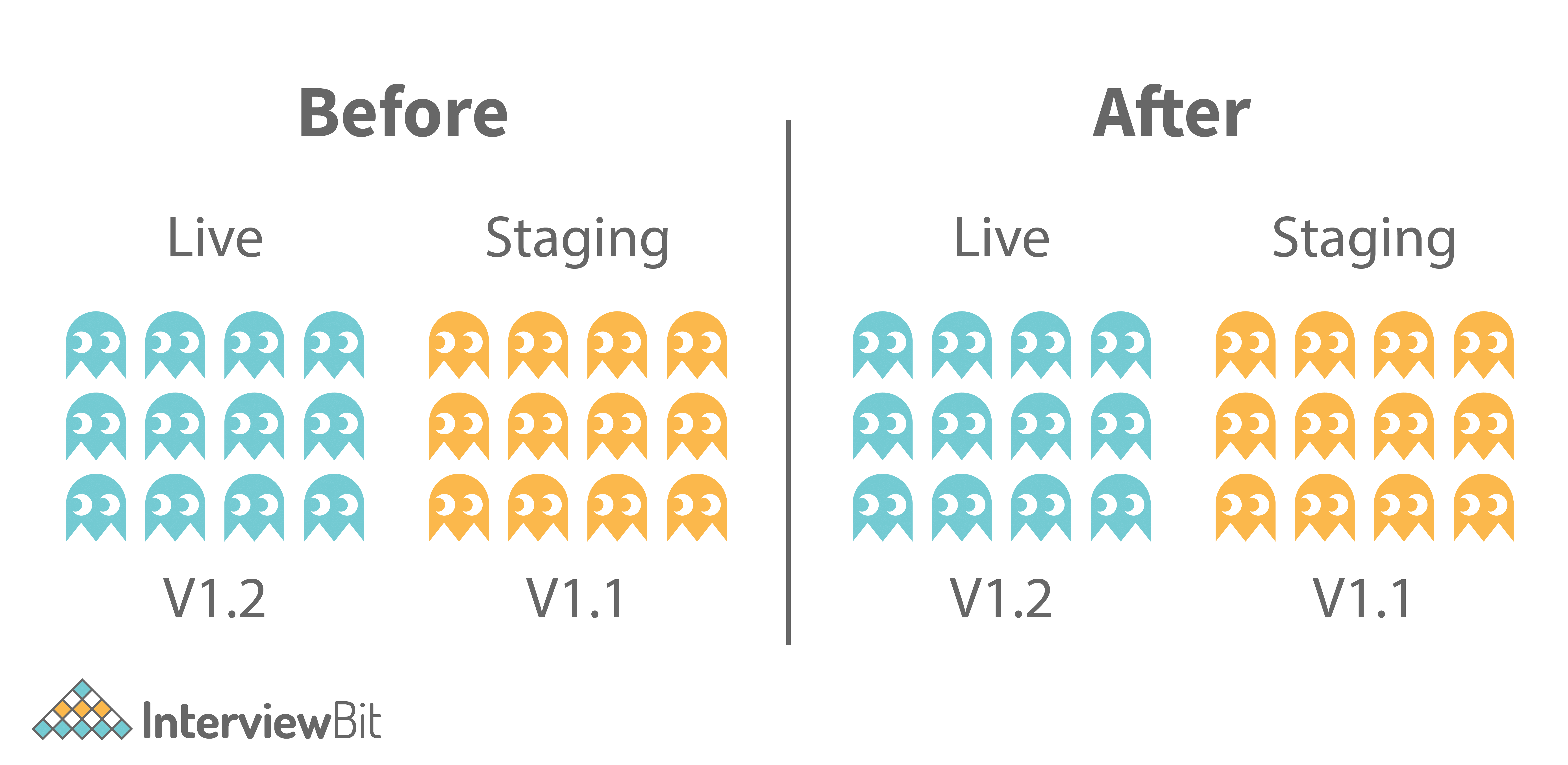
- Rolling Deployment Strategy
Using this deployment strategy, old versions of an application are completely replaced with the new versions by completely replacing the infrastructure on which they run.
Example: When a new version must be deployed to all nodes, the new version is deployed to the first node while all other nodes handle end-user traffic. As soon as the new version is successfully installed on the first node, it will begin managing end-user traffic while the new version is being installed on the second node. The process is repeated until all nodes have been successfully upgraded to the new version.

18. Explain inversion of control.
19. What do you mean by referential transparency in functional programming?
val four= add(1,3)If four is used anywhere in our code, it can safely be replaced with add(1,3), 1 + 3 or 4 wherever it appears. Thus, all the expressions below are equivalent in meaning and output:
val eight = four + four
val eight_v2 = add(1,3) + add(1,3)
val eight_v3 = 4 + add(1,3)
val eight_v4 = 8If we can swap back-and-forth between these expressions anytime, anywhere, without altering their meaning or output, then an expression is referentially transparent.
Enroll in our certificate program in Full Stack Web Development
20. State difference between normalization and denormalization.
| Normalization | Denormalization |
|---|---|
| Normalization involves removing redundant data (multiple copies of data) from a database and storing consistent, non-redundant data. | It involves combining data from multiple tables into a single so that it can be queried quickly. |
| It primarily focuses on clearing out unused data and reducing duplicate data and inconsistencies from a database. | On the other hand, denormalization aims to achieve faster query execution by adding data redundancy. |
| During normalization, tables are reduced in number due to the reduction of data in the database. | Denormalization, on the other hand, involves integrating data into the same database and therefore the number of tables to store the data increases. |
| Data integrity is maintained by normalization. A change to the data in the table will not impact its relationship with the other table. | Data integrity is not maintained by denormalization. |
| It optimizes the use of disk space. | It does not optimize disk space. |
21. In Java, what is a connection leak? How can you fix this?
- Pending: In its initial state, neither fulfilled nor rejected.
- Fulfilled: Indicating that the operation was successful.
- Rejected: Indicating that the operation failed.
23. State the difference between GET and POST.
| GET | POST |
|---|---|
| This method is used to request data from a certain resource (via some API URL). | This method is used to send or write data to be processed to a specific resource (via some API URL). |
| If you use the GET method to send data, the data is added to the URL, and a URL can be up to 2048 characters in length. Therefore, it has restrictions on data length. | It does not impose such limitations. |
| In comparison to POST, GET is less secure since data is sent as part of the URL. Passwords and other sensitive information should never be sent using GET. | It is a little safer to use POST than GET because the parameters are not saved in the browser history or the web server logs. |
| Everyone can see the data in the URL. | There is no data displayed in the URL. |
24. Explain the Restful API and write its usage.
25. What do you mean by MEAN Stack?
26. How to be a full stack developer?
- Plan your learning path according to your career goals
- Learn the fundamentals, necessary technologies, and develop the skills you need to be a full-stack developer and necessary technologies.
- Learn from tutorials and videos, but learn to code as well.
- Based on what you learn, create your own project.
- Make a portfolio of your work.
- Start your job search and nail the interview.
27. How many types of full-stack developers are there?
- MEAN Stack (MongoDB-ExpressJS-AngularJS-NodeJS).
- MERN Stack (MongoDB-ExpressJS-ReactJS-NodeJS).
- LAMP Stack (Linux, Apache, MySQL, PHP).
- LEMP Stack (Linux, Nginx, MySQL, PHP).
- Full-Stack Python.
- Full-Stack Elixir.
- Full-Stack Django.
- Full-Stack Java.
- Full-Stack Ruby on Rails.
28. Which full stack is best?
29. Is full-stack development a good career?
30. How much do full stack developers earn?
🚀 Start Coding Today! Enroll Now with Easy EMI Options. 💳✨
Get Hired as a Full-Stack Developer: Master the Skills Employers Are Looking For!
Start Learning With EMI Payment OptionsFull Stack Developer MCQ Questions
1. What are the skills a full-stack developer should possess?
2. CORS stands for ___.
3. In what ways can developers reduce the loading time of their web applications?
4. What software deployment strategy creates two separate infrastructure environments?
5. What type of class does Dependency Injection not involve?
6. The use of callback functions leaves you with code that is difficult to read and maintain. True or False.
7. ______ can be used as an alternative to callback functions in JavaScript.
8. Which JavaScript-based technologies are part of MEAN for developing web applications?
9. Which of the following are limitations of the arrow function in ES6?
10. Which of the following involves removing redundant data from a database?
| Our Other Courses | ||
| MEP Course | Quantity Surveying Course | Montessori Teachers Training Course |
| Performance Marketing Course | Practical Accounting Course | Yoga Teachers Training Course |


